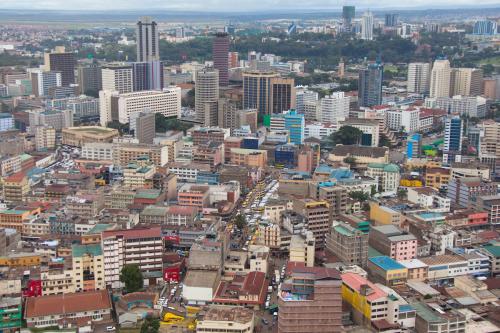Historically, urbanization has been considered a process that accompanies structural transformation and industrialization, though Africa has seen a less consistent process. In light of this trend, a recently published United Nations Economic Commission for Africa report, Urbanization and Industrialization for Africa’s Transformation, looks at ways to promote and reinforce structural transformation by accelerating industrialization and harnessing the opportunities presented by Africa’s rapid urbanization. The report highlight the challenges, opportunities, and drivers of urbanization in Africa. The discussion covers the topics of premature deindustrialization, the environmental impact of urban growth, and the relationship between cities and agricultural development, among others. In order to understand the African structural transformation and urbanization relationship, the report also explores some of the unique trends of African cities, particularly the important role of natural resource rents in Africa’s urbanization and urban primacy.
Natural resource-dependent countries often urbanize in less-than-traditional ways
While high GDP per capita tends to be correlated with high levels of urbanization, this tendency does not necessarily hold true for countries with high natural resource rents. The figure below plots urbanization levels against log GDP per capita, while taking into account natural resource rents per capita, showing that, in certain resource-rich Africa countries, urbanization is not a necessary condition for economic growth. For example, in Equatorial Guinea, which has the continent’s largest GDP per capita, less than 40 percent of the population lives in cities. In 2014, natural resource rents made up one-third of Equatorial Guinea’s GDP.
 Source: Author’s calculations using World Development Indicators.
Source: Author’s calculations using World Development Indicators.
The report highlights the emergence of “consumption cities,” which are created when natural resource rents are used to fill the gap between urbanization and industrial development. Contrary to “production cities,” whose economies depend on manufacturing, the economies of “consumption cities” mainly consist of non-tradable services, such as commerce, transportation, and government services. Two examples of such cities are Luanda and Lagos. These cities have fewer workers employed in manufacturing and tradable services than their Asian and Latin American counterparts with similar levels of urbanization (Gollin, Jedwab, and Vollrath, 2016.)
Large primary cities dominate urban systems in African countries
Another challenge presented in the report is that of urban primacy—which indicates the dominance (in terms of political and economic activity, and population size) of a given country’s primary city. Levels of urban primacy—which can create overcrowding and an excessive concentration of goods and services—vary across African countries. In Senegal, for instance, 53 percent of the urban population lives in Dakar. Conversely, Nigeria does have relatively balanced urban system with only 15 percent of its urban population living in its largest city, Lagos. However, as seen in Figure 5.2, in many African countries, more than 40 percent of the urban population lives in the largest city.
Figure 5.2 Percentage of urban population in largest city and national policies to promote urban system balance, 2015
The report states that urban primacy in Africa can be attributed to low locational opportunities for industrial companies. In order to solve this issue, the report argues that policies toward creating said opportunities and developing secondary cities can create linkages between urban commodities and rural markets. The report highlights the example of Ethiopia, whose decentralization policy has yielded positive results. The country has created industrial parks around its secondary cities, which focus on industrial clusters such as agro-processing and textile factories. One city, Hawassa, has already attracted 15 global textile firms and signed an agreement to train 30,000 textile workers.
Still, at times, industrial hubs form naturally, in accordance with their environmental endowments. The report gives the example of Garoua, a moderately sized city in Cameroon, which serves as a major industrial hub in the country. The city was not formed through a decentralization policy; rather, it was created organically as a port city surrounded by fertile agricultural land. While decentralization policies can assist in directing industrial activity away from primary cities, it is important to take into account environmental conditions. For instance, Rwanda has identified six secondary cities to serve as economic poles of sustainable and inclusive growth, while leveraging the cities’ natural endowments. For example, the Huye district, endowed with a rich soil, has gathered support from the countries’ research institutes and has become a hub for the country’s agri-business sector.
At the same time, as certain African countries have put in place decentralization mechanisms to promote the creation of industrial hubs in secondary cities, the report also warns that these mechanisms can lead to a redirecting of resources away from in-need primary cities to secondary cities with relatively low competitive potential. Governments must take the context of the cities, such as environmental and locational, into account when creating these policies.




Commentary
Figures of the week: Natural resources-driven urbanization and urban primacy in Africa
March 31, 2017